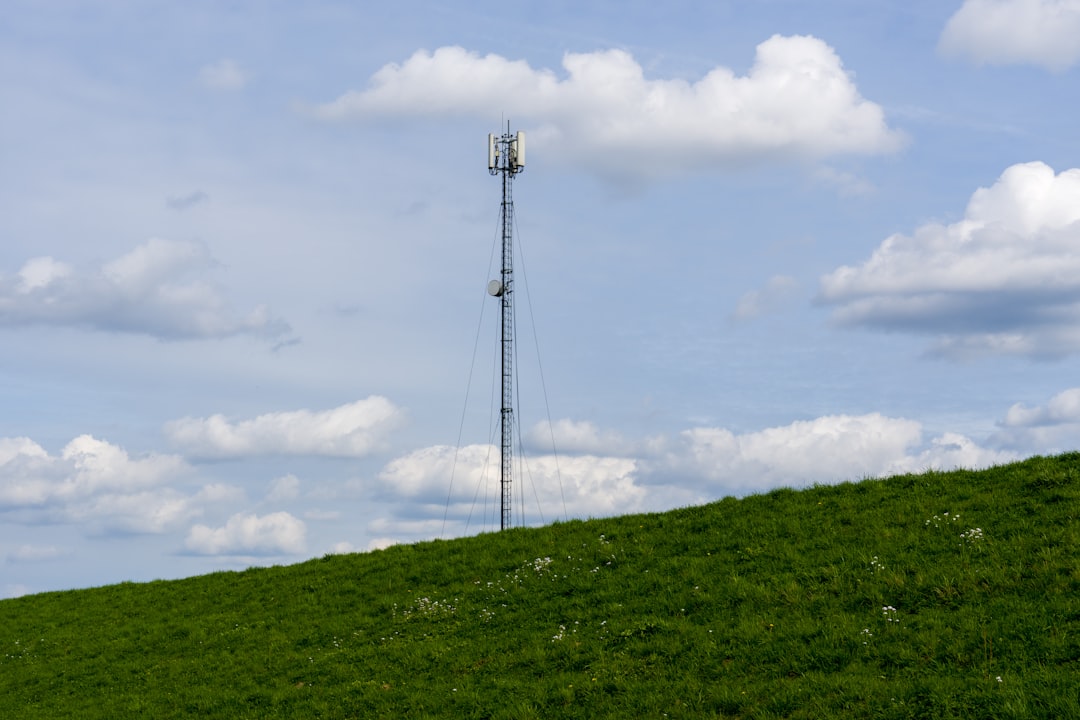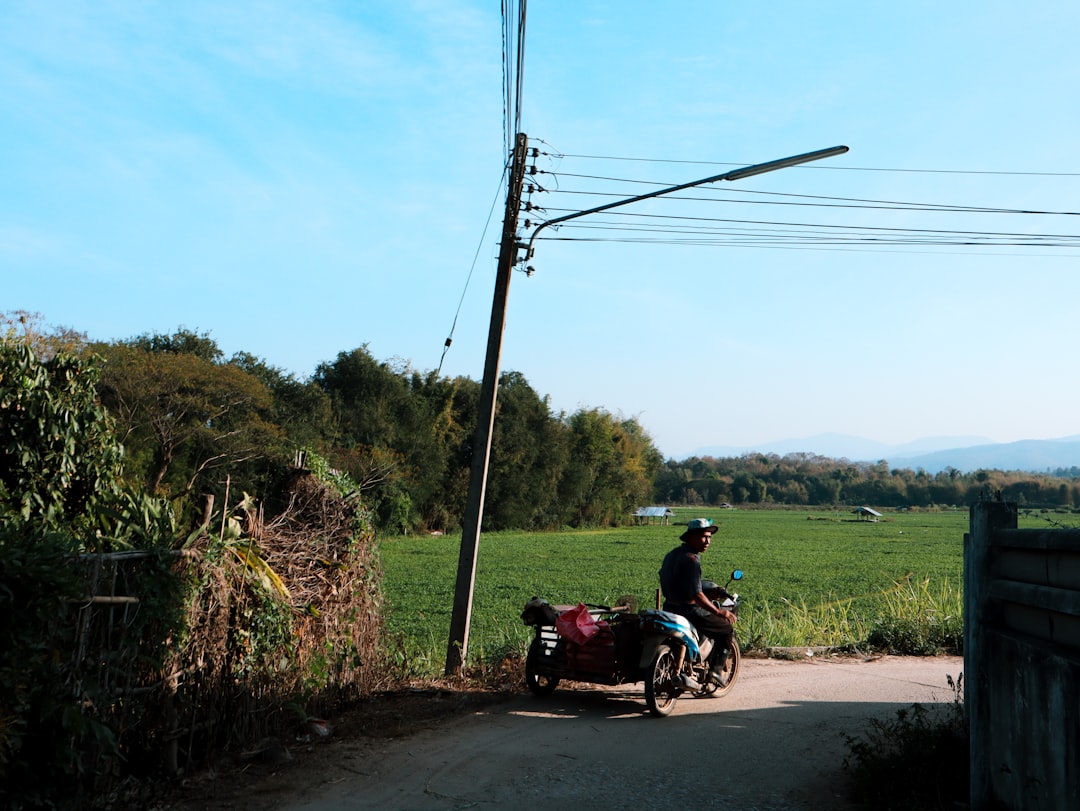Introduction
Hey there, fellow internet enthusiasts! Remember when having an internet connection in rural areas felt a bit like owning that one rare collectible that everyone talks about but hasn’t actually seen? Well, times are changing for the better. Gone are the days when slow-paced internet was accepted as just another charming quirk of country living. Thanks to modern marvels in technology, swift and reliable connectivity in rural areas is no longer just a dream. Buckle up, as we dive into the world of fast rural internet and explore the game-changing solutions that are enhancing rural broadband experiences for many.
The Historical Challenge of Rural Internet
 Image courtesy: Unsplash
Image courtesy: Unsplash
Lack of Infrastructure
In the past, the primary hurdle for providing high-speed internet in rural areas has been the lack of necessary infrastructure. Unlike urban centers with their tangled web of cables and connectors, rural regions have often been left out. The sparse population spread over vast distances made it economically unfeasible for internet service providers (ISPs) to set up shop. The absence of basic infrastructure like telephone lines and cellular towers meant that rural communities often had to make do with unreliable and slow internet connections.
High Costs and Low Demand
Another major roadblock has been the cost associated with laying down the required infrastructure in less populated areas. High installation costs, with lower potential for return on investment due to a smaller customer base, deterred many ISPs from entering rural markets. On top of that, the perceived low demand for high-speed internet in rural areas added to the reluctance. Many potential customers were historically without the need or knowledge for faster internet solutions, further shrinking the market appeal for ISPs.
Geography and Distance Issues
The geographical layout of rural areas often poses additional challenges. Large tracts of land with diverse terrains such as hilly regions, dense forests, and wide-open plains make it difficult to install cables or establish reliable wireless connections. The greater the distance between customers, the less profitable it becomes to lay traditional copper lines or coaxial cables, leading to a slower pace of broadband expansion. Each geographical hiccup, whether it be natural or man-made, only piled on more reasons for the existing slow connectivity in rural areas.
Emerging Technologies Enabling Fast Rural Internet
Satellite Internet Technologies
Luckily, technological advancements are now turning the tide for rural internet connectivity. Satellite internet is one boon that is blazing a trail in rural broadband availability. By beaming internet signals directly from space, satellites can deliver fast and reliable internet services to remote locations without needing extensive on-ground infrastructure. Modern providers like Starlink utilize low-earth orbit satellites, which significantly reduce latency and increase speeds, offering a transformative alternative to traditional rural internet solutions.
Wireless Broadband Innovations
Another game-changer in the quest for fast rural internet is wireless broadband technology. With advancements in 5G and other next-gen wireless networks, rural areas are starting to witness dramatic improvements in connectivity. Fixed wireless access, for instance, uses radio signals to deliver internet from a central antenna to individual homes, bypassing the need for physical cables. This technology makes it easier to cover large areas and reach homes that are not easily serviceable by traditional means.
Fiber Optic Deployments in Rural Areas
Fiber optics might seem like an urban luxury, but they’re steadily making their way into the countryside. Although challenging, the deployment of fiber optic cables in rural regions is gaining momentum thanks to local government initiatives and cooperative efforts among communities and small-scale ISPs. Fiber optic technology can provide unparalleled internet speeds, ensuring that rural areas are not left behind in the digital age. Some towns and regions are even banding together to create locally-funded projects that extend fiber networks to their communities, bringing with it the promise of fast, reliable connectivity.
The future of rural internet is looking bright, and these emerging technologies are paving the way for a new era of connectivity in rural areas. With continued investment and innovation, the dream of fast, accessible internet for all can become a reality, even in the most remote corners of our world.
Community-Driven Initiatives
When it comes to boosting rural internet speeds, community-driven initiatives are the unsung heroes. People often underestimate the power of a united community, but when neighbors come together with a shared goal, magic happens! Let’s dive into some ways these initiatives are making a difference.
Local Partnerships and Collaborations
One of the most effective ways communities are enhancing rural internet is through local partnerships and collaborations. Local businesses, schools, and residents team up to form coalitions that aim to bring better connectivity to everyone. By pooling resources and knowledge, these groups are challenging the obstacles that have long held back rural internet speeds.
For instance, a local business may lend its high-speed connection towers to provide a wider reach, while schools can rally support to secure funding. Through collaboration, these partnerships act as a bridge, ensuring that even the most remote locations can tap into high-speed internet without breaking the bank.
Government and Non-Profit Programs
In addition to local collaborations, government and non-profit programs are crucial in driving internet solutions forward in rural areas. Municipal and state governments often partner with non-profit organizations to deploy broadband services. These programs are designed to target underserved areas, provide funding, and sometimes even outline simplified regulations to help smaller providers enter the market.
For example, initiatives like the Rural Digital Opportunity Fund in the U.S. are paving the way for communities to access fast rural internet, prompting service providers to invest in these areas. Such programs often provide the needed financial boost for infrastructure development, bringing high-speed internet closer to reality for rural communities.
Grassroots Efforts and Crowdsourced Projects
Never underestimate the power of grassroots movements and crowdsourced projects. Often sparked by local residents tired of sluggish internet, these efforts gather community support to crowdsource funds, manpower, and information. Crowdfunding campaigns play a pivotal role here, enabling communities to raise capital needed to install essential equipment and infrastructure.
These grassroots efforts often encourage innovative solutions and can lead to the formation of local broadband cooperatives, where the community gets to own and manage their internet service. It’s about taking matters into their own hands, without waiting on big providers to step in.
Benefits of Fast Internet in Rural Areas
 Image courtesy: Unsplash
Image courtesy: Unsplash
Wondering why all this hustle for fast rural internet? Let’s look at the significant benefits that come with connectivity in rural areas.
Enhanced Economic Opportunities
With fast internet, rural areas can see a boom in economic opportunities. Small businesses can harness online platforms to reach wider markets, while entrepreneurs find it easier to launch start-ups with global reach. This connectivity allows farmers, for instance, to access online markets and advanced agricultural technologies, optimizing production and profitability.
Improved Education and Access to Information
Fast internet in rural areas revolutionizes education by opening doors to vast amounts of resources. Students can take online courses, access e-libraries, and participate in interactive learning platforms from the comfort of their homes. Additionally, teachers can integrate digital tools into their lessons, enhancing the learning experience.
Strengthening Community Connections
Lastly, internet solutions bring communities closer. Social media, video calls, and online events allow residents to stay connected with family and friends, no matter how far they might be. It also fosters a community spirit, with residents participating in virtual town halls and community boards to discuss local matters, ensuring they stay in the loop.
In summary, fast rural broadband doesn’t just improve internet speeds; it transforms communities by fueling economic growth, enhancing education, and fostering stronger bonds.
Conclusion
In the journey to fast rural internet, it’s clear that times are changing for the better. With a combination of innovative solutions like satellite internet, fiber-optic expansion, and fixed wireless access, residents in rural areas can stay connected without the lag.
– Improved Quality of Life: Access to high-speed internet enhances education, healthcare, and business opportunities.
– Economic Growth: Fast internet boosts local economies by attracting new businesses.
– Community Engagement: Better connectivity fosters stronger community ties.
Remember, rural broadband doesn’t have to mean slow internet anymore. With ongoing developments, the gap between urban and rural connectivity is narrower than ever. So, gear up to embrace the digital future, no matter where you live!




